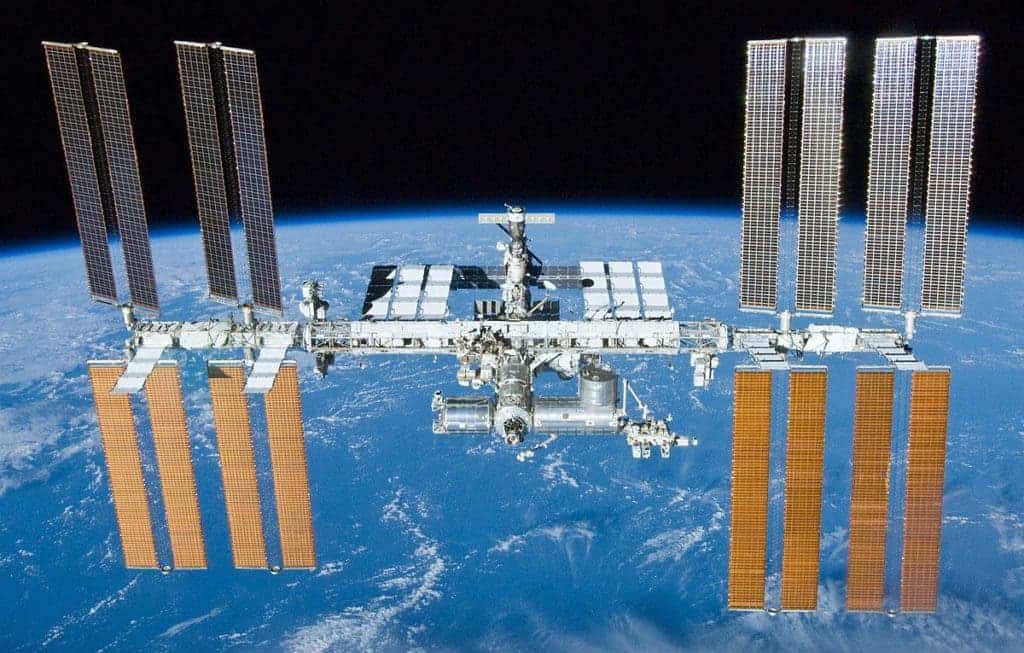
Last week, astronauts aboard the International Space Station were alerted of oxygen escaping from somewhere. After sealing each compartment one by one, the astronauts finally found the leak in the Russian segment: a mere 2-millimeter hole, which suspiciously looked like it was drilled there. Fortunately, the leak was plugged in due time before a disaster had the chance to happen.
But the incident is still in everyone’s mind and authorities on Earth are looking for the person responsible.
Strikingly, according to a Russian investigation, the ISS leak may have been deliberate sabotage — it’s a possibility they aren’t ruling out, at least.
The minuscule pressure leak is actually a big deal. If astronauts hadn’t plugged it, the station would have run out of air in only 18 days. Initially, everyone thought some micrometeorite or space junk penetrated one of two Soyuz spacecraft docked at the station — after all, astronauts face such perils each day.
But it soon became clear that nothing hit the station because there was no impact site on the exterior of the spacecraft. What’s more, the hole — which you can see in a re-posted image below after NASA deleted it for no reason — looks like it was drilled by a human hand. There are traces of a drill sliding along the surface, Dmitry Rogozin, head of Roscosmos, told TASS.
ISS Leak summary:
First thought was MMOD strike.
Then NASA released pics. Lots of people: "Hmmm, doesn't look like MMOD". NASA deleted the photos.
Top Russian news site RIA NOVOSTI reported – via sources but apparently confirmed by Mr. Rogozin – it was a drill hole. pic.twitter.com/520kHK0TMc
— Chris Bergin – NSF (@NASASpaceflight) September 3, 2018
“However it is too early to say definitely what happened. But, it seems to be done by a faltering hand… it is a technological error by a specialist,” Rogozin said.
According to RIA Novosti, a Russian news agency, an unnamed source at Energia Rocket and Space Corporation — the company that built the Soyuz in question — said that the hole was made on the ground, not in space by one of the astronauts. Apparently, it was accidentally drilled by some worker at Energia who, fearing repercussions, chose to mask the little hole with a seal and a concealing fabric. Then, the seal somehow managed to pass the Russians’ pressurization tests and a launch into space where it docked with the space station. In time, however, the seal began to leak.
The other leading hypothesis is that the leak was made by some criminal hand — an act of sabotage.
“There were several attempts at drilling,” Rogozin said late Monday in televised comments,
“What is this: a production defect or some premeditated actions?” he asked.
“We are checking the Earth version. But there is another version that we do not rule out: deliberate interference in space.”
Maxim Surayev, a former Russian cosmonaut, currently a member of parliament on behalf of President Putin’s ruling party, has a more exotic idea: he said the hole may have been made by a mentally disturbed astronaut who hoped to come home earlier.
“We’re all human, and anyone might want to go home, but this method is really low,” Maxim Surayev of President Vladimir Putin’s ruling party, told RIA Novosti state news agency,
“If a cosmonaut pulled this strange stunt—and that can’t be ruled out—it’s really bad,” said Surayev, who spent two stints on the ISS.
“I wish to God that this is a production defect, although that’s very sad, too—there’s been nothing like this in the history of Soyuz ships.”
Whatever the cause may have been, the spacecraft’s cabin pressure wasn’t the only thing that was fractured by this incident. In the aftermath of the incident, tensions rose between the Americans and the Russians.
Upon discovering the dangerous leak, the Russians wanted to immediately plug it with a special glue and insulation. Astronaut Andrew Feustel, the commander of the 56th ISS mission, however, was against the plan — not before he saw proof that the operation would be safe in a test on Earth, he demanded. The commander asked Houston flight control for 24 hours of extra time so that they could gather more data about the properties of the glue.
Moscow, however, insisted that issue had to be fixed immediately. Just one hour after uncovering the source of the loss of pressure, the Russians decided to go ahead with their proposed decision.
Cabin pressure on @Space_Station is holding steady after the crew conducted repair work on one of two Russian Soyuz spacecraft attached to the complex. The repair was made to address a leak that had caused a minor reduction of pressure. Details: https://t.co/bCgcvz8bTb pic.twitter.com/PRGN1d94gw
— NASA (@NASA) August 30, 2018
They patched the cracks by filling them with epoxy-based sealant and applying duct tape – both part of the standard repair kit. European astronaut Alexander Gerst reportedly plugged the hole with his finger until fellow crewmates could patch it up with tape. Soon after, the pressure was restored in the Soyuz. In the following day, on Friday, another patch was placed. The Russian cosmonauts plan to apply a third layer of sealing compound this week.
That’s right folks: an astronaut’s finger, along with duct tape and glue saved the day. But on the ISS, things are far from being truly healed.


